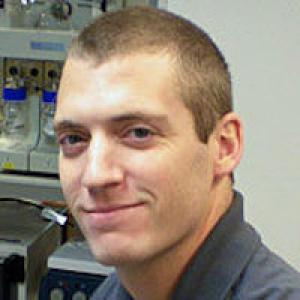
Contact Information:
My formal training is in Molecular and Structural Biochemistry for which I received a Ph.D. under the direction of Dr. Michael B. Goshe at North Carolina State University in September 2008. My Ph.D. thesis research focused on developing novel chemical reagents and associated methodologies to study protein structure and protein-protein interactions using mass spectrometry. Since joining the Proteomics and Metabolomics Core Facility in 2008, I have been involved in a broad range of research efforts from small scale basic science research projects to large clinical scale proteomic studies. In 2105, I become an Assistant Research Professor in the Department of Cell Biology and in 2023 I moved into the Director role for the Facility.
One area that I'm particularly interested in is the use of mass spectrometry to characterize protein post-translational modifications such as phosphorylation. After joining the Proteomics and Metabolomics Shared Resource, I was tasked with developing a sensitive, reproducible, and quantitative LC-MS based phosphoproteomic platform capable of measuring global phosphorylation events from cultured cells, biological fluids and tissue. Those developments included TiO2 based phosphopeptide enrichment protocols, modified Waters NanoAcquity UPLC methods tailored to the analysis of phosphorylated peptides, and MS acquisition strategies capable of accurately sequencing phosphorylated peptides. To date, the platform has been applied to over eighteen large scale global quantitative phosphoproteomics studies.
More recently I have been involved in expanding the capabilities of the Proteomics and Metabolomics Shared Resource to include LC-MS based workflows for structural proteomics including chemical crosslinking to elucidate protein complex orientations through near-space distance constraints as well as chemical footprinting strategies to define protein surface accessibility as a function of protein interactions, drug binding, denaturation, etc. These strategies are particularly attractive for investigators studying large protein complexes, membrane protein systems, or low quantity proteins in physiologically relevant buffer systems which are often not amenable to high-resolution techniques such as X-ray crystallography and NMR spectroscopy.